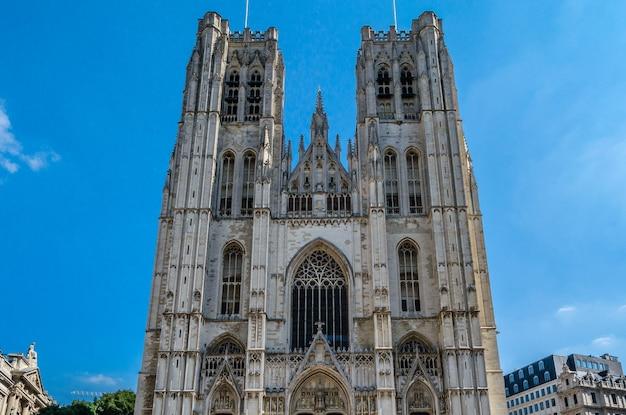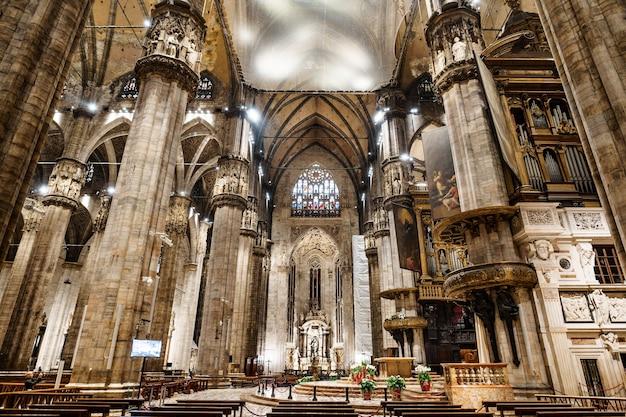Welcome to my blog post dedicated to unraveling the moral of the captivating short story “Cathedral” by Raymond Carver. As an avid reader and literature enthusiast, I find immense joy in exploring the intricate layers of meaning within a literary work. In this article, we will delve into the symbolism of the cathedral, analyze the significance of the characters, examine the author’s choice of point of view, and ultimately uncover the central idea that Carver conveys.
But before we embark on this introspective journey, let’s address a few burning questions: Why is the cathedral such an important symbol in the story? What does the ending of “Cathedral” truly mean? Who is the speaker/narrator, and what can we learn about his character? Prepare yourself for an enlightening discussion that will shed light on these queries and more.
So grab your favorite beverage, get cozy, and let’s dive deep into the profound and thought-provoking world of Carver’s “Cathedral.”

What is the Moral of the Story Cathedral?
A Deeper Understanding: Exploring the Moral of “Cathedral”
In the renowned short story “Cathedral” by Raymond Carver, we journey alongside a narrator who undergoes a transformative experience. But what is the moral of this profound tale? Let’s delve into the story’s essence and uncover its underlying message.
Breaking Down Preconceptions and Embracing Empathy
At its core, the moral of “Cathedral” revolves around breaking down preconceptions and embracing empathy. The story follows the narrator’s interactions with a blind man, Robert, who challenges the narrator’s limited worldview. Instead of succumbing to stereotypes or judging based on appearances, the tale emphasizes the importance of connecting with others on a deeper level.
Seeing Beyond Sight: The Power of Perception
One significant aspect of the moral lies in the power of perception. Although Robert is blind, he sees and understands the world around him in ways that the sighted narrator cannot initially comprehend. By immersing himself in Robert’s perspective, the narrator learns that true insight stems from an open mind and a willingness to step outside of one’s comfort zone.
Overcoming Isolation: Finding Connection in Unexpected Places
Another crucial moral lesson within the story is the value of overcoming isolation and finding connection in unexpected places. The narrator initially feels disconnected from his wife due to their emotional distance, a sentiment mirrored by his skepticism towards Robert. However, by engaging in an evening of shared experience, the narrator discovers the transformative power of genuine human connection.
The Triumph of Human Imperfection and Vulnerability
“Cathedral” also emphasizes the triumph of human imperfection and vulnerability. While the narrator grapples with feelings of inadequacy, Robert’s presence allows him to embrace his own vulnerabilities. This revelation fosters personal growth, highlighting that our flaws and weaknesses do not define us but rather contribute to our shared humanity.
Igniting Change: A Call to Action
Lastly, the moral of “Cathedral” calls readers to ignite change in their own lives. Through the narrator’s journey, we are reminded of the potential for personal growth and transformation when we challenge our own biases and expand our horizons. The story urges us to dismantle barriers of prejudice and embrace the transformative power of empathy.
In conclusion, the moral of “Cathedral” encompasses breaking down preconceptions, embracing empathy, overcoming isolation, valuing human imperfection, and igniting personal change. Raymond Carver masterfully weaves these themes together, presenting readers with a thought-provoking narrative that encourages self-reflection and challenges societal norms. So let us digest the lessons imparted by this remarkable story and, in our own lives, seek to open our eyes beyond the confines of sight.

FAQ: What is the Moral of the Story Cathedral?
How or why is the Cathedral an important image or symbol in the story
The Cathedral in the story holds both literal and symbolic significance. As a physical structure, the Cathedral represents a backdrop against which the characters’ relationships unfold. Metaphorically, the Cathedral symbolizes connection, insight, and enlightenment. Its grandeur and spiritual connotations serve as a catalyst for the narrator’s transformation and awakening to inner depths he had previously ignored.
What does the ending of Cathedral mean
The ending of Cathedral is open to interpretation, leaving room for individual reflection. Some may view it as a moment of transcendence, where the barriers between the narrator and Robert collapse, allowing for a genuine human connection. It signifies the transformation of the narrator’s limited perception into a more empathetic understanding of others and the potential for personal growth.
What makes the narrator start explaining what he is seeing on television
The narrator’s description of the TV program featuring the Cathedral reflects his attempt to bridge the gap between himself and Robert, the blind man who will soon visit. The narrator’s initial discomfort with Robert’s blindness and his own prejudices results in him trying to bridge the divide by sharing his limited knowledge about cathedrals. This marks the beginning of their unexpected bond and the narrator’s gradual realization that true understanding goes beyond mere visual perception.
Who is the speaker/narrator of Cathedral? How much do we learn about his character
The narrator in Cathedral is an unnamed man who serves as the protagonist and storyteller. While his character is not explicitly fleshed out, we learn about his insecurities, prejudices, and initial discomfort towards Robert due to his blindness. The narrator’s transformation throughout the story gives us insight into his willingness to challenge his own preconceptions and engage in personal growth.
What is the tone of the story Cathedral
Carver employs a realistic and conversational tone in Cathedral, capturing the nuances of human interactions. While moments of tension and discomfort arise, the overall tone is one of self-exploration and an underlying sense of humor. Carver masterfully infuses the story with subtle hints of irony and wit, providing an engaging and relatable reading experience.
What is the moral of the story Cathedral
The moral of Cathedral emphasizes the importance of empathetic understanding and the transformative power of genuine human connection. Carver encourages readers to look beyond superficial judgments and prejudices, highlighting the potential for personal growth and the richness that lies within meaningful relationships. The story reminds us that true insight and enlightenment come from embracing our shared humanity.
What is the significance of Carver’s choice of a Cathedral as a catalyst for the narrator’s learning experience
Carver’s choice of a Cathedral as a catalyst in the story underscores the themes of perception and understanding. The Cathedral represents a safe space where the narrator can explore his own limitations and biases. By engaging with the Cathedral’s grandeur and symbolism, the narrator embarks on a journey of self-discovery that ultimately leads to a deeper connection with others.
How does the point of view contribute to the effectiveness of the story Cathedral
Carver’s use of a first-person point of view in Cathedral places readers directly in the shoes of the narrator. This intimate perspective allows us to witness the narrator’s personal growth and transformation firsthand. By sharing the narrator’s thoughts and emotions, Carver creates a powerful sense of empathy and connection between the reader and the story.
What is the central idea of Cathedral
The central idea of Cathedral revolves around the transformative power of empathy and the potential for personal growth that lies within genuine human connections. Carver explores the limitations of superficial judgments and the need to overcome societal biases in order to truly understand and appreciate others.
What is the meaning of the story Cathedral
The meaning of Cathedral lies in its exploration of personal transformation and the realization that true understanding comes from going beyond appearances. By overcoming his preconceived notions and engaging in a genuine connection with Robert, the blind man, the narrator discovers the importance of empathy and the potential for personal growth that lies within deep human connections.
What is important about the two flashbacks, the ones about the narrator’s wife’s past and Robert’s past
The two flashbacks in Cathedral, one about the narrator’s wife’s past and the other about Robert’s past, provide insight into the characters’ lives and experiences. They serve as a means to deepen our understanding of their perspectives, struggles, and ultimately, their capacity for change. These flashbacks highlight the complex nature of human lives and emphasize the importance of empathy in forging connections.
What is the narrator’s epiphany in Cathedral
The narrator’s epiphany in Cathedral occurs when he closes his eyes, joins hands with the blind Robert, and experiences a moment of genuine connection during their joint attempt to draw a Cathedral. In that profound moment, the narrator realizes that true understanding and connection transcend visual perception. This epiphany marks a turning point in the narrator’s personal growth and perception of others.
What is the difference between a church and a cathedral
While both churches and cathedrals are places of religious worship, they differ in terms of size, architectural complexity, and ecclesiastical importance. Cathedrals are usually grander in scale, often featuring intricate design elements and serving as the principal church within a diocese. Churches, on the other hand, can refer to local places of worship and may vary in terms of size and significance.
Who is the antagonist in Cathedral
In Cathedral, it is important to note that the story doesn’t present a clear-cut antagonist. Instead, the conflicts lie within the narrator himself – his initial prejudices, discomfort, and limited perception. The true antagonist becomes the narrator’s own biases, which he must confront and overcome in order to forge a genuine connection with Robert.
Is the wife a flat or round character? What about Robert
The wife in Cathedral is neither a flat nor a round character, as she remains relatively peripheral to the central dynamics of the story. While she serves as a catalyst for the narrative events, we only gain glimpses into her past and her connection to Robert. On the other hand, Robert is portrayed as a round character, with his blindness symbolizing his ability to see beyond appearances and fostering the narrator’s growth and transformation.
